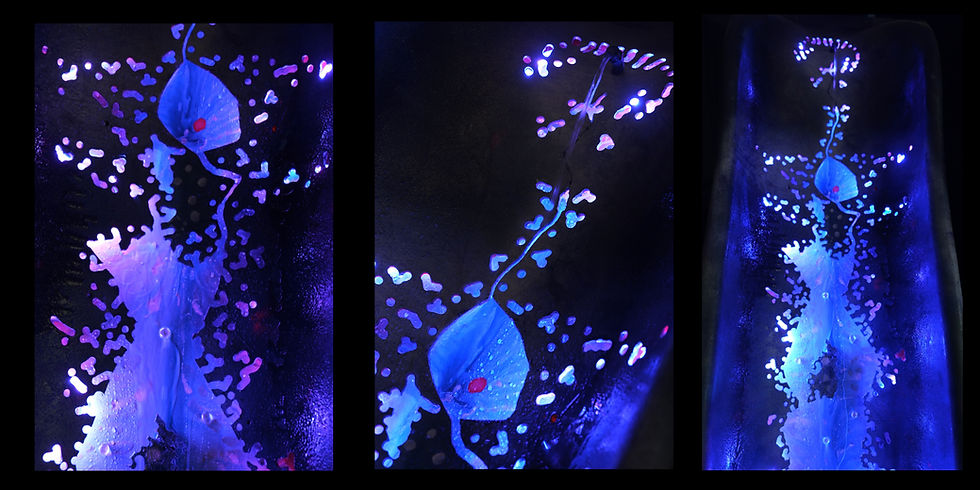On "here/there" pedagogical practice
- Enma Saiz, M.D.
- Aug 29, 2016
- 3 min read
My children’s abandoned playground slide lay recumbent in my overgrown Miami backyard. Her shapely form called to me like Homer’s sirens. She demanded that I turn her into a fountain-sculpture of a powerful sea goddess. I complied. I carved her uppermost layer, holes revealing light, I slow-danced with her as colored resin trickled down her length and dried. At first the carving was violent, the goddess-puta being split by my rotary saw and Dremel tool. The cleft represented a Shibboleth that migrants on either side might have to cross, having to speak an unknown language for passage or be killed. Then, Richard Blanco’s poem Matters of the Sea/Cosas del Mar, revealed a different opportunity, an opportunity for carving the cleft into a sea, a sea where the two shores could blend into one...
“The sea doesn’t matter, what matters is this: we all belong to the sea between us, all of us once and still the same child who marvels over starfish, listens to hollow shells, sculpts dreams into impossible castles. We’ve all been lovers, holding hands, strolling either of our shores--our footprints like a mirage of selves vanished in waves that don’t know their birth or care on which country they break. They break, bless us, return to the sea, home to our silent wishes.
No one is other, to the other, to the sea, whether on hemmed island or vast continent, remember: our grandfathers, their hands dug deep into red or brown earth, planting maple or mango trees that outlived them; our grandmothers counting years while dusting photos of their weddings--brittle family faces still alive on our dressers now. Our mothers teaching us how to read in Spanish or English, how to tie our shoes, how to gather fall’s colors, or bite into guavas. Our fathers worn by the weight of clouds, clocking-in at factories, or cutting sugarcane to earn a new life for us. My cousins and I now scouting the same stars above skyscrapers or palms, waiting for time to stop and begin again when rain falls, washes its way through river or street, back to the sea.
No matter what anthem we sing, we’ve all walked barefoot and bare-souled among the soar and dive of seagull cries. We’ve offered our sorrows, hopes up to the sea, our lips anointed by the same spray of salt-laden wind. We’ve fingered our memories and regrets like stones in our hands we can’t toss. Yet we’ve all cupped seashells to our ears. Listen again to the echo--the sea still telling us the end to our doubts and fears is to gaze into lucid blues of our shared horizon, breathe together, heal together.”
I carefully wrapped my repurposed slide-fountain, now named after the powerful orisha, Yemaya, and drove her to Vermont where I could share my “here” sculpture with its two shores blended, with my “there” colleagues. The opportunity for this very blending is what keeps many of us coming back to VCFA. The lands between us melt away, the seas between us merge, we are reunited in ardent discussion about current political and social events--migrations, refugees, icebergs melting/global warming, the goddess-puta dichotomy, Cuba-US reconciliation. These are all topics of discussion and teaching/learning opportunities the goddess inspired. Exploring the different perspectives from here and there would not be possible without the opportunity to converge at this wonderful institution.
Blanco, Richard. Matters of the Sea/Cosas del Mar. Pittsburgh: University of Pittsburgh Press, 2015. Print.

Enma Saiz is a Cuban-American visual artist based in Miami, Florida. She is a teacher, physician, and a visual artist who explores issues of migration, feminism, and the hyphenated state. She is currently seeking her MFA degree at the Vermont College of Fine Arts (VCFA).
www.saizfineart.com
enmaartist@gmail.com
enma.saiz@vcfa.edu


















Comments